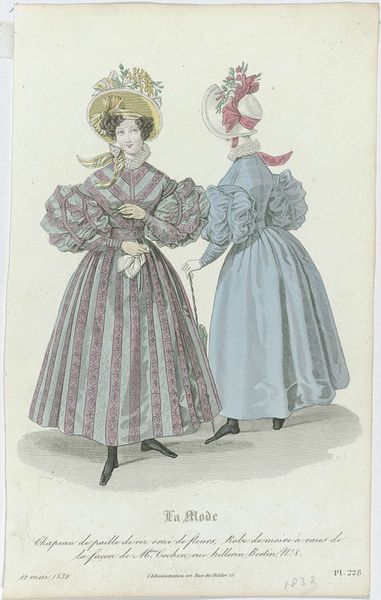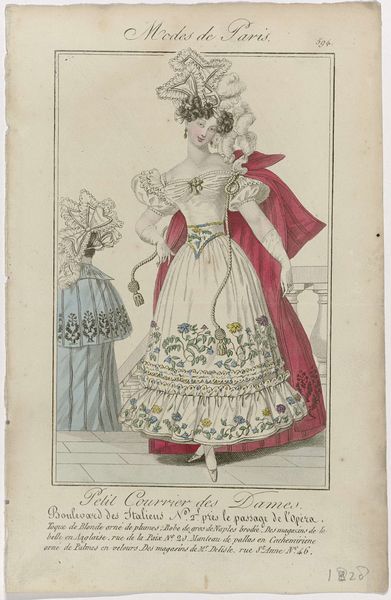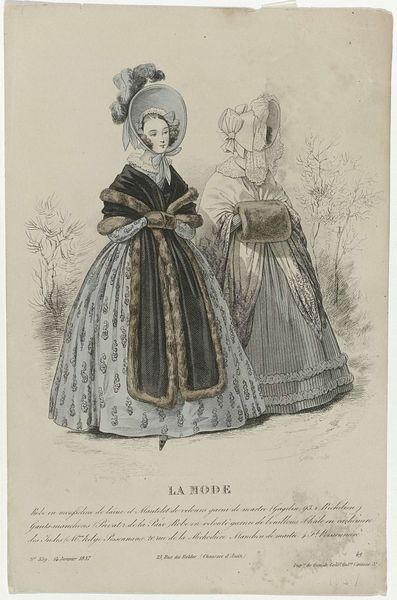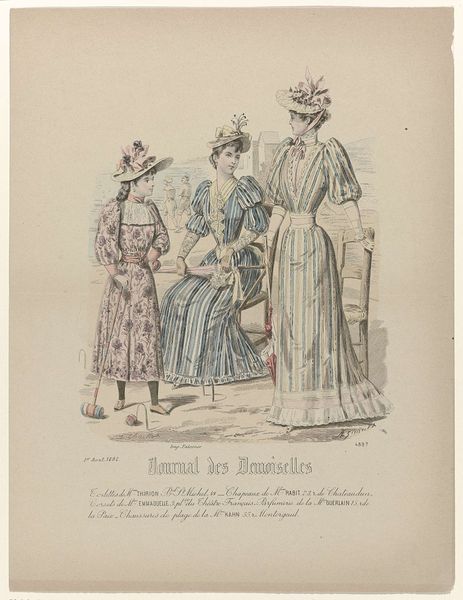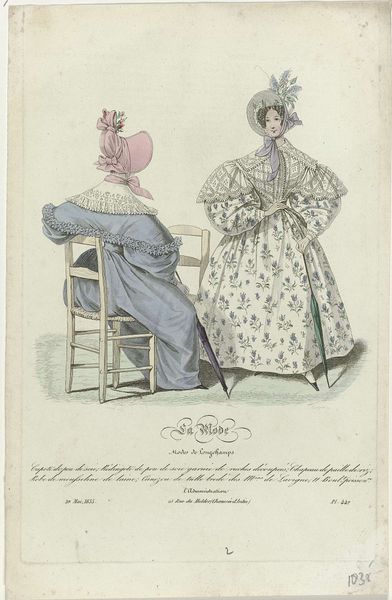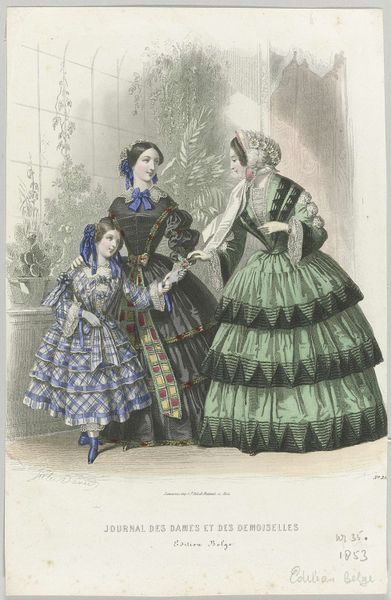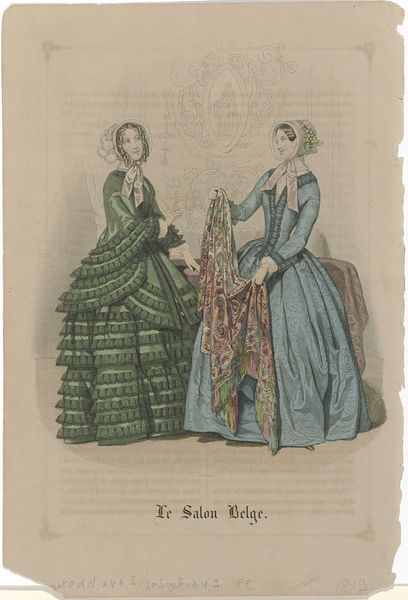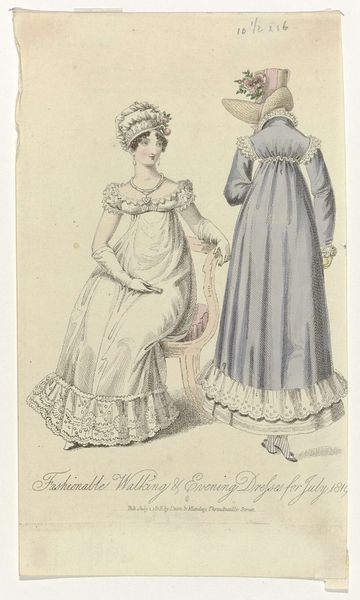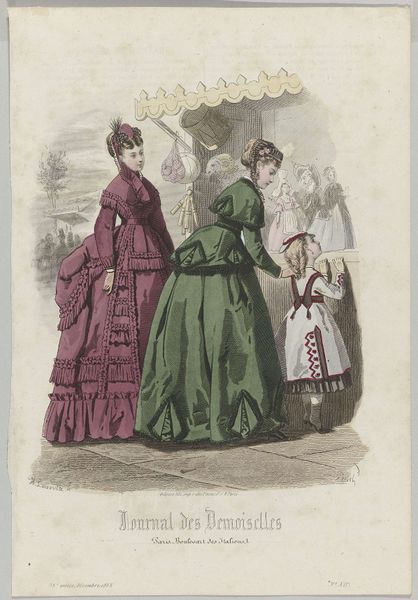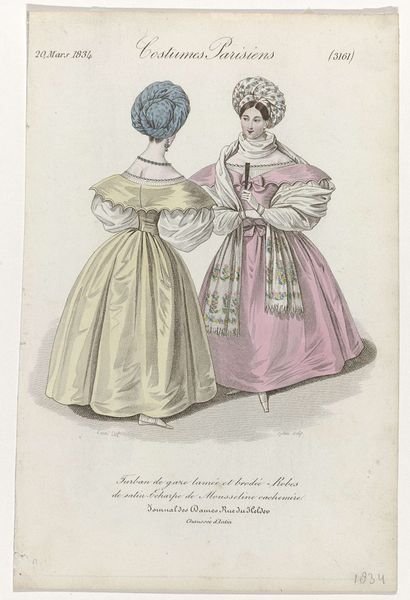
Le Follet Courrier des Salons, Lady's Magazine and museum, 1835-1836, No. 474: Petit bord en velours (...) 1835 - 1836
0:00
0:00
drawing, print, watercolor
#
portrait
#
drawing
# print
#
figuration
#
watercolor
#
historical fashion
#
romanticism
#
watercolour illustration
#
dress
Dimensions: height 221 mm, width 144 mm
Copyright: Rijks Museum: Open Domain
Curator: This print, titled "Le Follet Courrier des Salons, Lady's Magazine and museum, 1835-1836, No. 474: Petit bord en velours (...)," likely originated as a page in a fashion magazine, and dates between 1835 and 1836. It appears to be a watercolor illustration showcasing current styles. Editor: It has a wistful, slightly melancholic air, wouldn't you agree? The figures are graceful, but there's a reserve to their poses, a certain stillness emphasized by the delicate, almost faded color palette. Curator: Exactly! These fashion plates were more than just illustrations of clothing; they were indicators of social status and aspirational tools for middle and upper-class women. Think of them as the 19th-century equivalent of influencer marketing! The attention to detail—the floral patterns, the draping fabrics, the accessories—all speak to a culture obsessed with outward presentation and its intersection with a gendered society. Editor: Yes, I see the outfits less as mere clothing, but rather constructed identities performing for a patriarchal gaze. Note the positioning of the standing figure in relation to her dress; the dress itself functions almost like an ornate cage, reflecting women’s confined roles. The flowers soften that reading but still feel somewhat restrictive. Curator: I think it's interesting to note how these magazines provided a platform – albeit a constrained one – for female authorship and readership. They catered to women's interests and fostered a sense of community through shared aesthetics, but of course, this operated within fairly rigid societal boundaries. The very existence of publications like this demonstrate women’s public roles and how they were slowly claiming their space, visually, sartorially and politically. Editor: Agreed. And examining these illustrations allows us to trace the evolution of female representation. While idealized and commercialized, they also provide valuable insight into the complexities of gender, class, and social change during the Romantic era. Curator: Ultimately, studying historical depictions of fashion helps us understand not just what people wore, but also how they lived, perceived themselves, and interacted with the world around them. Editor: Yes, these fashion prints are powerful documents of sartorial politics!
Comments
No comments
Be the first to comment and join the conversation on the ultimate creative platform.

